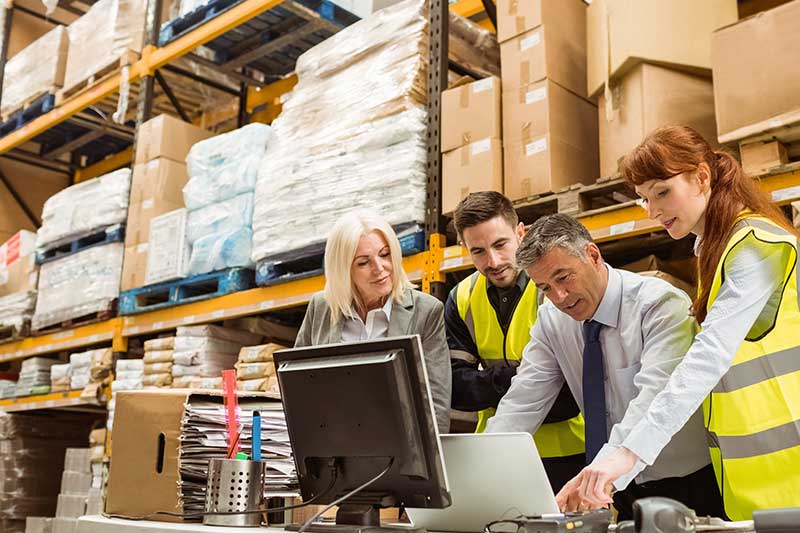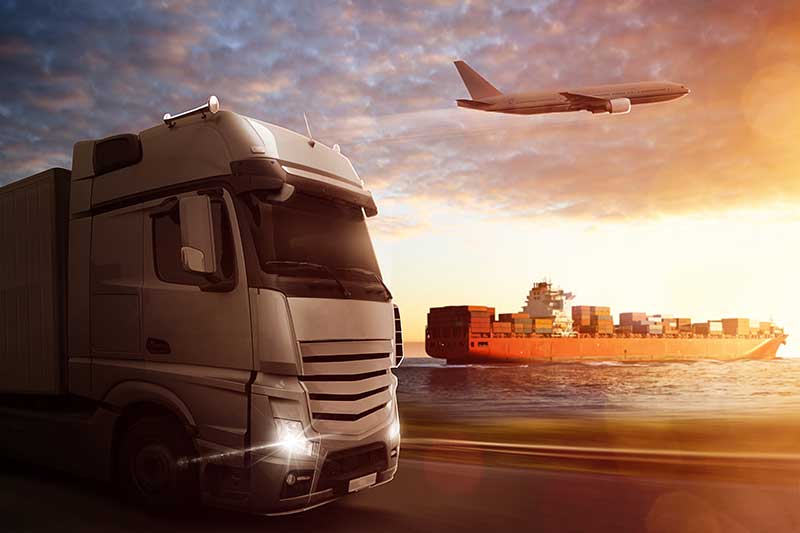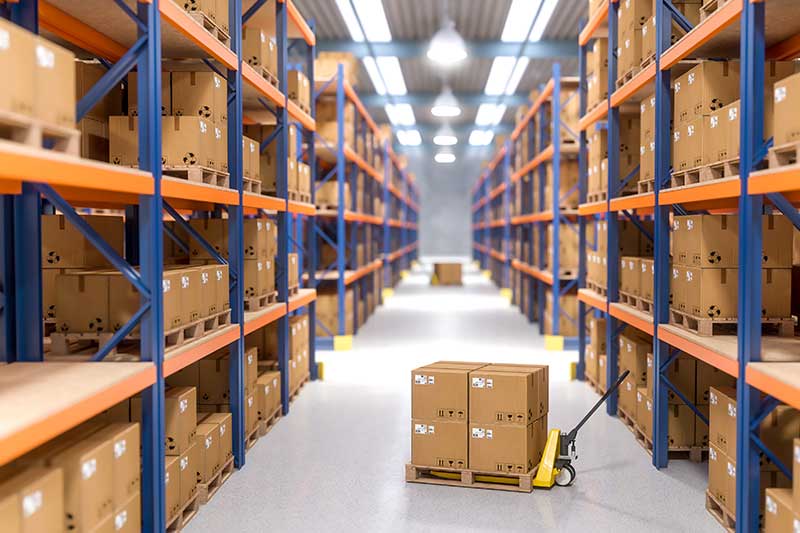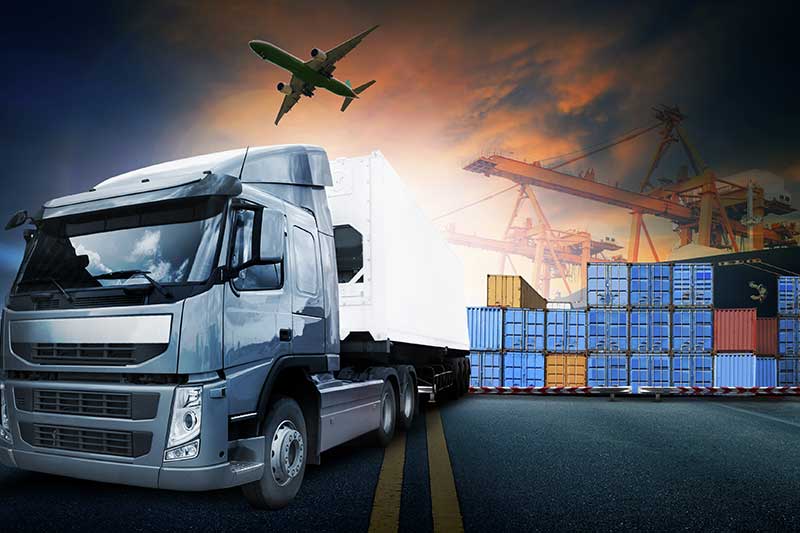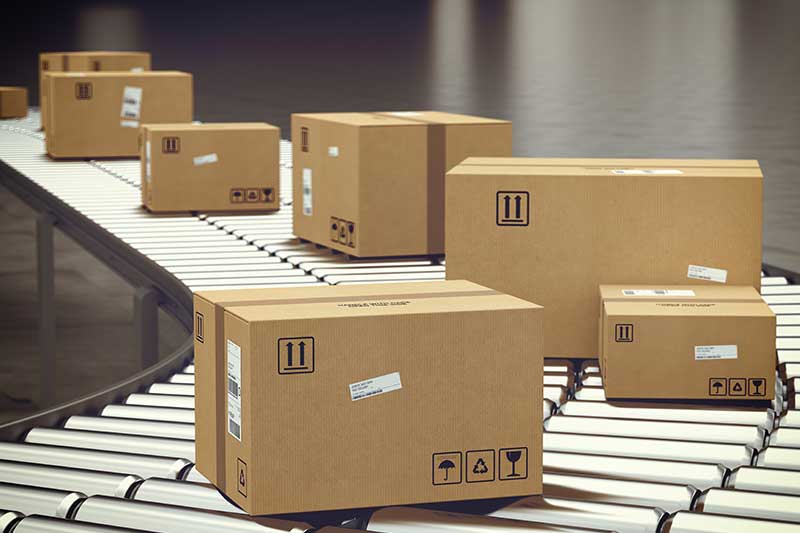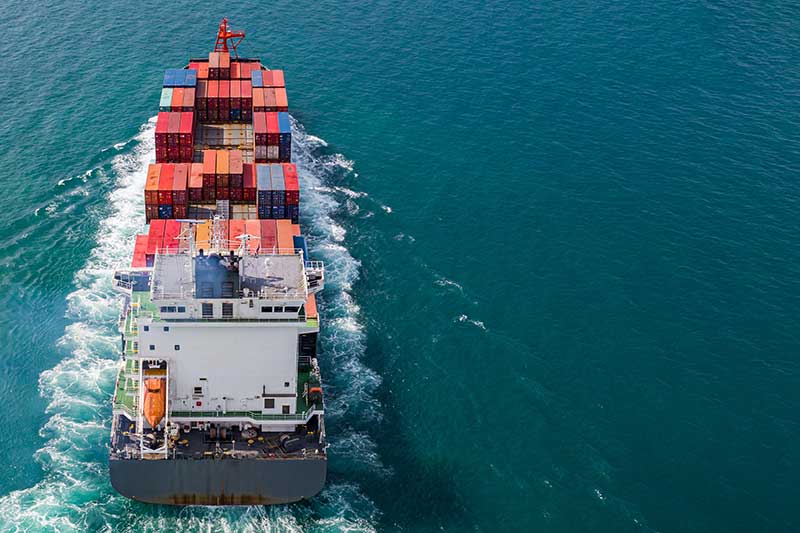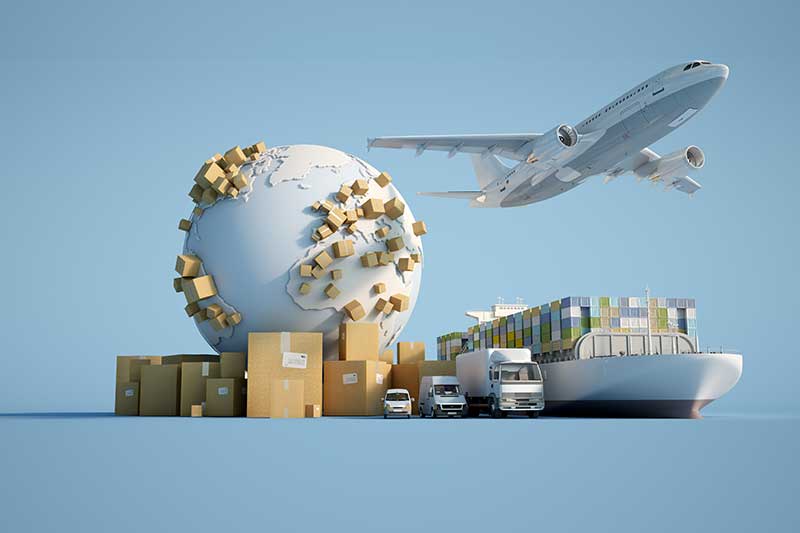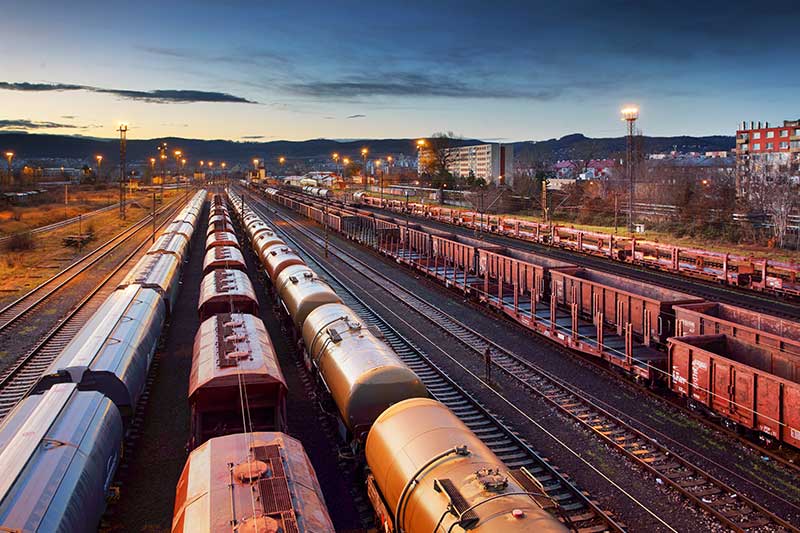How Should Online Retailers Develop Their Shipping Strategies?
Have you ever encountered this scenario? A new customer chances upon your website after finding a product he or she likes while browsing the Internet. He or she clicks on the link and sees that your price is much better than other competitors. From there, he or she clicks the button that says “Add to Cart”. After hitting the “Checkout” button, however, he or she realizes that there are additional shipping and handling fees. Some would continue with the purchase, while others may leave and search for a cheaper alternative. How can you make sure that a customer will stick to your online store then? Develop your shipping strategies further. How do you do that?
Why Not Offer Free Shipping?
Consumers will surely love seeing the words ‘Free Shipping’ when visiting your website. This is applicable to domestic orders. This may mean that you need to handle the shipping fee by yourself, affecting your profit a bit. The best way to make this work, though, is to raise the price of your product, setting it at a level that is as competitive as those offered by others. Another is to offer free shipping with a minimum order amount. This way, you can attract customers to continue doing business with you, and at the same time enjoy more dollar profits, which can later be used to offset shipping cost.
Which strategy will work for free shipping? The answer will depend on how much you want to gain from the sale, and which niche your business is operating in. If you feel that neither of these strategies will work for your business, the next best thing to do is consider another strategy.
Charge Shipping Rates Accordingly
Some retailers would think how much they can make with the shipping fees that they charge their consumers. If you want to be different from others, you need to get rid of this mindset. It is crucial to charge shipping fees in an amount equal to what the logistics company will charge you. It does not matter if you are delivering the goods locally, or you need global transportation to get products to your consumers. There may be instances when there will be a slight discrepancy as to how much you are charging your clients and how much you will actually pay the logistics company.
Stick to Charging Flat Fees
Parcels come in different weights, shapes, and sizes. If you are considering this when shipping goods to your customers, then imposing a flat fee will be ideal. This strategy, however, requires some careful planning, making sure you have computed the average amount that you are usually charged for shipping a package to its destination. This will work so that your customers will not spend less or more for goods that they buy online.
There is a lot to consider when shipping packages to your customers, either locally or internationally. Even when you already have these strategies in mind, nothing beats hiring an experienced logistics company who can do the job for you. At STC Logistics, we always ensure that our clients are charged reasonably for shipments they make, whether at a domestic or global scale.
What You Need To Know About Full Truckload Shipping
Today’s world of shipping is far more complex than it used to be. The onslaught of digital age information can be too much to handle sometimes, making shippers feel overloaded and overwhelmed. Shippers with too much on their mind can find the optimization of their time, the reduction of risk, and cost saving difficult to think about or deal with.
One method of saving money and time is full truckload shipping. LTL (less than truckload) shipping increases costs and creates inefficiencies. On the other hand, when you fill a truck to near capacity, efficiency and savings are unlocked. For optimal outcomes, this is an important factor in transport management.
What Is FT Shipping (Full Truckload Shipping)?
When, for a given shipment, a truck is fully used/loaded with cargo, this method of shipping is referred to as full truckload. This reference to “a full truckload” can also incorporate the use of other truck/vehicle descriptions including the following:
- Intermodal
- Refrigerated
- Flatbed
- Backhauls
- Dry van
- Possibly partial truckload
Shipping rates for full load transportation, depending on the type of truckload, can vary. Overall, however, there are several common maximum limit classifications. These are as follows:
- Shipping 2500 ft.³ of product
- Accommodating 48 standard pallets
- Shipping 44,000 pounds of product
If space for more than 10 pallets is required, or if more than 15,000 pounds of freight will be shipped, the best option is often full truckload shipments.
FT Shipping Benefits
The biggest benefits to full truckload shipments are as follows:
- Better shipping rates
- Fewer risks
- Faster transit times
FT Shipping Can Present Challenges
Though full truckload shipping can be the best method of product transport, it does not come without its challenges. These can include the following:
- Higher-than-other-mode rates
- Problems procuring full truckload availability
- Having to accept rigid shipping and delivery schedules
- The need to pack merchandise better
Of course, where there is a problem, there is often a solution. Shippers can use a few best practices to try and overcome these challenges. These can include the following:
FT shipping should be used when…
- the weight of the cargo makes FT shipping more cost-effective than would the LTL method.
- the cargo is time sensitive.
- the manufacturer/seller wants an entire truck dedicated to their shipment.
- there are enough items available to fill the whole truck.
The Full Truckload Future
It is relatively uncertain where full truckload transporting is headed. Available capacity may one day be an FT shipping problem and is currently a major talking point among freight and transportation industry officials. The future of FT freight may also be impacted by the rising rates of LTL, limited truck capacity, and other rising transportation mode costs/rates.
To ensure cost effective, timely freight delivery, some shippers are nervously using as many modes of transportation as possible to overcome Mother Nature (during winter snowstorms, hurricane seasons, etc.), the ELD (electronic logging device) mandate, and more. This might translate into a demand for fuller trucks more often. However, railway and other innovative alternate modes may also be in high demand and take a lesson from FT shipping (all cargo holding containers/vessels full at all times).
Making the most of the best practice methods of shipping, STC Logistics knows the ins and outs of transborder shipping, global transportation, domestic transportation, and more. We are, in fact, completely familiar with all things logistically related in today’s high-tech world. Contact us today for more information.
How To Avoid Becoming A Victim Of Cargo Theft
Finding reputable freight forwarding companies can be stressful because of the fact that goods can be stolen during voyage. There is a growing volume of cargo thefts that are reported every year. Generally, commodities that are mostly targeted by thieves are those that can easily be sold on the black market. Food/drink, household goods, metals, and all kinds of electronics are the most common among other types of cargo.
Despite having all kinds of precautions, the volume of cargo that are stolen is still rising. Cargo theft occurs not only in high-risk areas. It can happen anywhere during transport and even before cargo leave the facility via identity theft. Here are tips on how to identify common cargo theft tactics so you can avoid becoming a victim:
Taking Extra Precautions in Securing Cargo on The Road
Straight cargo theft happens when the goods are stolen from its location. Truck stops, parking lots, and other areas where a cargo truck can park and a driver momentarily leaves the cargo unattended are common sites where this kind of thievery happens. This situation can be avoided by not leaving loaded trailers in high cargo theft areas. Use high security rear door locks and install landing gear locks when dropping a load for good measure.
Be Careful When Dealing with Any Carrier or Broker
Strategic theft can happen when the thieves try to use deceptive means in pursuing the cargo. The FMSCA is a good resource when checking for company information. Confirm identifications of drivers at the pick-up points. Also check for truck or trailer information provided by the company.
Be Aware of Cyber-Attacks
Thieves can use malware in stealing information that can be used to steal precious cargo. A strict implementation of cyber security can help recognize phishing emails and other forms of cyber-attacks. Company personnel must also be oriented about these things so they can help examine suspicious online interactions.
Constantly Track the Status of The Cargo
Drivers must follow a protocol in checking the goods every now and then. Inspecting the trucks for any signs of theft before reaching the destination will minimize lag in detection. Companies should have a cargo tracking system to monitor the location of the cargo. GPS trackers are also useful technologies both in monitoring and locating stolen goods.
Taking Positive Steps in Thwarting Cargo Theft
Freight forwarders should be responsible enough to offer extra layers of cargo protection for their customers’ cargo. Everyone in the logistics chain should stay vigilant at all times.
Drivers must be aware of different protocols that will secure every load they carry. Warehouse workers must be trained to recognize any cyber-attack that could potentially be related to cargo theft. The warehouse facility itself should be equipped reliable safety technologies. As for the companies, using new technology and reinforcing existing security will help forge a trusting relationship with the customers. It is important that everyone works as a team and have all parties involved in keeping all cargo safe.
How Did E-Commerce Transformed The Warehousing Industry?
In today’s economy, e-commerce platforms have made a huge impact on how consumers shop across the globe. Individuals can now do their shopping in the comfort of their own homes, with just smartphone, tablet, laptop, or desktop. With that said, the distribution and warehousing industry has found it necessary to adapt to these new trends. In this post, we will look into several components of the industry that have been transformed by e-commerce.
Lead Times
In the past, logistical hubs were prime locations. Due to the surge in online shopping, and the fact that most consumers want their orders shipped in one to two days, these changes have made it even more important for warehouse facilities to be situated in or closer to large cities. After all, this is what customers have come to expect from e-commerce sites.
Single Products Vs. Pallets
Businesses used to ship products to other businesses via flat rack containers. These transportation mediums were especially suitable for bulky cargo that required loading from the sides or the top. Today’s retail stores, however, are losing popularity. This means that the shipping is now done directly to the consumers’ homes and makes for unpredictable shipping patterns. Now, warehousing companies need to reevaluate their picking and shipping processes, materials, technologies, as well as methods of handling storage and managing inventory.
Buying Patterns and Order Volumes
Aside from holiday season rushes, past sales patterns were more or less predictable and tended to remain relatively stable throughout the year. Because of this level of predictability, it was convenient for warehouses to make the necessary arrangements. With the rise of e-commerce, however, unpredictable buying patterns have sprung up because more consumers chose to ship their goods directly to their homes. In order to support the changing system, warehouses and distribution centers had to develop new technologies and strategies, as well as provide new training programs for their employees.
Consumer Behaviors and Expectations
Research has shown that consumers who shopped online tend to behave differently from those who shopped at physical retail stores. One of the most prominent behaviors were the returning of purchased goods. This growing trend may be the result of the higher expectations that today’s e-commerce consumers have.
Perhaps online buyers have grown accustomed to the quick fulfillment services, easy returns processes, and minimal delivery fees that are offered by e-commerce giants such as Amazon. What this means for warehouses is that they have to be prepared to accommodate increased return rates and improve their delivery methods while keeping costs in check.
Logistics Technologies
The traditional warehousing model is no longer capable of supporting the higher expectations and unpredictable buying patterns of Internet-savvy consumers. That’s why an increasing number of warehousing facilities have turned to robotics and other automated logistics technologies to increase overall efficiency, accuracy, and productivity. This way, they could tackle increasingly complex shipping (delivering goods directly to consumers) and other geographical considerations.
If you are looking to expand your warehousing capabilities to adapt to the latest e-commerce trends, you have come to the right place. At STC Logistics, we offer a host of warehousing and fulfillment services that may make your lives easier!
Do You Meet These International Shipping Crate Requirements?
With the rise of e-commerce, more and more products are shipped to international destinations. If you are planning to join the global shipping frenzy, it is important that you first learn how to prepare an international shipment. Oftentimes, this form of shipping has more requirements to fulfill and regulations to meet than just placing products in shipping crates and boxes. As each import and export country has their own unique set of international shipping crate requirements, customs regulations, and government requirements, it pays to be familiar with them. This way, you can continue doing business confidently in this global economy.
Height and Weight of Shipment
When it comes to shipping crates and pallet containers, there are various restrictions on their height and weight. For example, the standard size of pallets in the United States is 48″ x 40″ x 6″. In addition, the height of these pallets should not exceed 60 inches or five feet. Another rule that business owners need to know is Less than Container Load. They indicate that the skids on pallets must fit into a multi-model or forty-foot standard ocean freight container. If the pallets do not meet these basic requirements, the shipment may be returned or get stuck on the dock.
In some cases, one’s shipment may also require prior approval permit from the shipping company. Common factors tend to include:
- The height of the skids exceeds seventy inches
- The skid has an excess length of one hundred nineteen inches
- The skid has an excess width of eighty inches
- The weight of the skid exceeds the twenty-two hundred pound or one-thousand kilo limit
The Bug Stamp
Countries that are under the International Plant Protection Convention (IPPC) will only accept wooden supply and packing materials that bear the Bug Stamp. Some of these items include dunnages, cases, pallets, crates, and drums. The purpose of these rules is to prevent the potential spread of various diseases and pests that often originate from plant-based materials.
Documentation
Businesses must prepare the documents for their international shipping crates as accurately as possible. The slightest error may lead to costly delays for both you and your customers. Below are several documents that are generally required for shipping:
- Export licenses (only if applicable)
- Export packing lists
- Dock receipts
- Warehouse receipts
- Certificates of insurance
- Certificates of origin
- Destination control statements
- Inspection certifications
- Consular invoices
- Commercial invoices
- Bills of Lading
Customs
Rejected shipments may affect the reputation of your business. Although occasional delays (due to fluctuating factors such as weather) are generally acceptable, your customers may start looking for another supplier once the grace period is over. So, before you send the shipment to the customs, it is important to determine if the customer is based in an embargoed country or is a restricted trading party. In addition, you may want to ensure that you are not shipping any prohibited or restricted commodities.
As you can see, there is plenty to consider when shipping crates internationally: paperwork, packing materials, height, and weight. If you are looking to work with an experienced logistics company, you have come to the right place! At STC Logistics, our team works tirelessly to ensure that our clients’ shipments are transported smoothly on the global stage.
Effective Ways To Avoid Holiday Shipping Delays
Before you know it, the holidays will be upon us. Ordinarily, that would be good news for e-commerce merchants. In the United States, in the last two months of the year, small to midsized retailers can see an increase of as much as 40% of their total annual revenue. That is, unless dreaded but avoidable holiday shipping delays thwart their efforts.
This year, sales for Christmas and similar holidays are thought to be in excess of $1 trillion. Merchants who don’t step up their game and concentrate on order fulfillment/shipping are going to suffer – possibly irreparably. To avoid holiday delays this year, take a look at the following tips and consider an order fulfillment provider.
Avoiding Shipping Delays for the Holiday Season
Consider all of the following in order to avoid as many holiday shipping delays as possible:
- Holiday challenges – One of the biggest challenges of the holidays is getting an order to the buyer on time. Customer satisfaction decreases if an order is late. Be sure that you have enough manpower for the holidays.
- Inventory – In addition to enough manpower, you’re going to need to make sure you have enough inventory to support all the orders that come in.
- Data correctness – This can apply to lots of data, but a correct address is one of the most important pieces of data where deliveries are concerned. (Make sure address labels are legible.)
- Couriers – Be entirely familiar with your courier’s cut off times.
- China – With all of the products that are manufactured in China today, one important aspect to keep in mind is that China has their very own holidays during which they will not ship out or manufacture goods.
Could You Use an Order Fulfillment Provider?
As the holidays roll around, it can make a big difference, where delivery delays are concerned, if you have chosen a reliable order fulfillment provider. These services have arrangements with couriers. Well in advance, they get notified about potential issues such as cut off times, technical problems, or limited capacity. So that you can focus your efforts, time, and attention on driving sales, your order fulfillment provider can make suitable arrangements if need be and do any communicating that might be necessary.
Fulfillment providers do the following:
- Take care of your storage
- As soon as they come in, pick and pack your orders
- Use software that is integrated with your e-commerce platform and fully automated
What if there isn’t sufficient storage space for your products? Your order fulfillment provider, through either ownership or partnerships, will find warehouses or alternative storage. So that you can avoid unnecessary delays, they will also let you know when your inventory needs to be restocked. Businesses that deal with order fulfillment understand what to be aware of to avoid delays, which policies or tariffs apply to regions or countries, and what delivery method works best for each individual region.
The specialization of order fulfillment providers encompasses everything that goes on from receiving an order in the very beginning to the end of the process, including physical delivery of your product.
STC Logistics is not only an invaluable tool for today’s e-commerce merchant but a good friend to have in this competitive industry. Our experts can assist you with rollouts and distributions, installations, packing and crating, warehousing and fulfillment, technology, and domestic, global, and transborder transportation. Call us today at 1-800-547-4324 to find out more.
Avoid These Pitfalls When Shipping By Barge
Though shipping by barge seems safe, and (in many cases) is relatively unavoidable, it has its pitfalls. By taking a close look at the aspects of barge shipping, you may gain a better understanding of the process itself and why certain pitfalls exist.
When people see barges, because they’re looking at them from land, they usually see them being towed out by a tug. To most individuals, it’s just one more method of sea transport. It seems simple and low risk. Unfortunately, that’s not necessarily true.
Why Is Barge Shipment So Popular?
Depending on what area you’re in, shipments by barge are not only popular but extremely common. This is particularly applicable in the region of the Asia-Pacific. Accessibility is one big advantage. They can access locations where larger vessels may have a problem. They’re also a relatively inexpensive mode of transport. Again, compared to large oceangoing vessels, they are cheaper to maintain and operate. An additional benefit includes versatility – though in smaller quantities, they can transfer a large variety of cargo.
Common Types And Causes Of Losses
As mentioned earlier, barge shipment is not without its risks. Let’s examine some of the problems that have arisen in the past, and their causes:
Most common problem – The most frequent issue where barges and tugs are concerned is foundering and stranding. The cause of this problem can be a number of factors combined or one factor by itself. These can include the following:
- Outdated navigation charts
- Tow gear failure, such as an old towline
- Underpowered tug
- Engine failure
Also possibly the result of the above causes of stranding or foundering can be capsizing. This can also be caused when there is structure failure or stability is compromised by inadequate securing and/or stowing of cargo.
Vehicle collision – Sadly, this is a common incident and involves other vessels as well as the vessel carrying cargo. Causes of this can include the following:
- Defective navigation aids
- Inadequate display of shapes and lights by barge or tug
- Poor navigation or watch keeping
- Crew negligence
Other causes of loss include losses due to fires and piracy or hijacking. See below for details.
Fire losses are typically caused by the following:
- Nature of cargo
- Poorly maintained or inadequate firefighting equipment
- Crew negligence
- Unsafe practices
- Poor housekeeping
Hijacking or piracy is possibly caused by the following:
- No or little anti-piracy measures
- Poor voyage planning
- Poor watch keeping
How to Avoid Barge Shipment Problems
The following are requests that should be made to avoid the most common problems that arise with shipment by barge. Ask for these:
- Vessel to wage and suitability approval survey
- Intended route details and voyage plan
- Crew experienced in carrying special cargo
- Tow configuration
- Certification of crew, barge, and tug
- Barge and tug specifications
Troubled Waters
Keep in mind that some barges and tugs display high risk characteristics right off the bat.
- If a barge or tug is classed by a society that is a non-IACS member or is unclassed, there’s trouble.
- Vessels that are over-aged, not operated to standards, and/or not maintained could lead to structural failure or a loss of propulsion.
- If, to tow the barge, the tug does not have at least the minimum power required, problems will ensue.
Additional characteristics can include the following:
- Vessel flagged in PSC blacklisted or little-known flags
- Operators/owners with poor reputation
- No or little PSC (Port State Control) Inspections history
If you would like assistance with your domestic, global, or transborder transportation, there are few better sources to turn to than the specialists at STC Logistics. Contact us today if you would like to find out more.
Understanding Air Cargo Export Procedures
Air cargo export procedures involve any number of steps – export documentation being one of them. Of course, Customs is a major factor in air cargo export procedures and can, for some, be a major hurdle. This particularly applies if you don’t have the documentation you need. Some of the procedures involved in air cargo transport depend on the cargo itself.
A Look At Documentation
There are a number of documents which are relatively common when it comes to exportation. The product and destination involved may, of course, demand more specific requirements. The following subsections are included as applying to export documents:
- Temporary shipment documents
- Certificates for shipment of specific goods
- Certificates of origin
- Export compliance documents
- Transportation documents
- Common export documents, and more
Specifically, common export documents can include the following:
- Pro forma invoice
- Export packing list
- Commercial invoice
For many, this is already making some heads spin. That’s why, more and more, businesses are going with logistics support companies to aid them in reducing the headaches of transport – particularly when transporting goods worldwide. Let’s take a look at some other aspects of air cargo export procedures.
Steps Taken
Here is an oversimplified list of steps taken during the journey of a product from manufacturer to the desired destination.
- A product is manufactured, packaged, and given to a shipper. While the freight is taken from the manufacturer to the airport (likely via ground transportation) an electronic data interchange is taking place between the manufacturer, shipper, the airport, and the freight forwarders at the final destination.
- If shipping is international, airport customs comes into play when the shipment arrives at the airport. The proper paperwork is essential. Customs will either release or deny the export. Involved in the document flow can be the following: house manifest, air waybill, flight manifest, packing list, house waybill, and more.
- Once Customs is cleared, the shipment is loaded onto the airplane.
- Upon arriving at its destination airport, goods will need to go through the customs release import process. They will need to be declined or accepted.
- From there, more ground transportation provides movements of the product from the airport to the final destination (possibly a holding facility/warehouse).
- From a holding facility or warehouse, products are distributed to stores or directly to consumers.
3PLs – Logistics Companies
With everything that is involved in shipping, particularly when shipping around the world, overseas, via railway, etc., it becomes too much for many companies to handle efficiently. The hiring of a logistics company or 3PL can simplify everything from product pickup, to warehousing, to transportation, to delivery, and more. Logistics companies today do the following supply chain duties (these duties apply to the supply chain starting at the manufacturer through to the consumer):
- Store goods
- Move goods (any and all shipping/transportation functions)
- Implement, plan, and control that storage and movement
- Certain logistics services, depending on the logistical needs of their clients, will handle all or just some of the above stated duties.
Naturally, not only do logistics companies take on the responsibility of the above stated duties, they provide the staff with which to execute those tasks. This saves manufacturers not just the headaches involved in all matters logistics-related, but saves the cost and burden of extra staffing, warehousing, etc.
STC Logistics knows what it’s doing when it comes to shipping and transport. We know all the ins and outs involved in air cargo export procedures and so much more. We offer warehousing, distribution, crating, packing, and so much more. Contact us today to find out how we can be of assistance to you.
A Quick Look At The Future Of Rail Shipping
Due to major shifts in the logistics industry, there is an increased need to employ more advanced modes of transportation. In addition to that, the aging generation of drivers, noxious gas emissions, and the rising demand for capacity are other problems that logistics professionals face. Fortunately, there is a solution: rail shipping.
While this type of freight transportation experienced downtime since the 1980s, it is making a major comeback these days. Today, railroads account for the movement of approximately 40 percent of American freight. Rail shipping is therefore critical to the U.S. economy, connecting businesses across the country as well as contributing billions of dollars annually.
If you are new to rail shipping, this post is perfect for you. Read on to find out what it is and how it affects the logistics industry.
What is Rail Shipping?
Rail freight transportation is a way businesses utilize to ship goods from one location to another. This method often involves different types of vehicles to transport the goods. For example, a railway carriage and rail transport system will work in tandem to transport one’s cargo. Rail shipping has been around for many years and is part of the global logistics chain. Because of its cost-effectiveness and fuel efficiency, rail shipping is considered an eco-friendly mode of transportation. Although rail shipping is a capital-intensive means of mechanized ground transportation, it has helped many countries increase economic growth and drive international trade.
With that said, below is a further look at how rail shipping can help resolve common logistics industry challenges:
A Reliable Method for Reducing Harmful Emissions
One of the biggest advantages of rail shipping is how environment-friendly it is. This form of freight transportation can handle a significantly higher volume of freight and travels a more solid route than other options. Due to faster transit times and the power of automation, rail shipping causes fewer carbon emissions over the long term.
More Room for Automation
New technology innovations in the rail shipping industry are at their peak of development. AI (artificial intelligence), IoT, Big Data, driver-less trains, and automation are some of these innovations impacting the industry. For example, automated Positive Train Control (PTC) systems are already implemented on over 80 percent of mandatory Class I route miles nationwide. In fact, they should be fully active by 2020. All of these efforts are helping eliminate human errors and labor.
Enhanced Safety
Because PTC systems are designed to automatically stop or slow down a train in case of human error or potential accidents, they have helped enhance safety (less human involvement) as well as eliminate highway congestion. The Association of American Railroads has reported that the rate of accidents on railroads has decreased by over 20 percent since 1980.
It is safe to say that rail shipping can be a great logistics solution for any business in the near future. The shipping method is constantly evolving and becoming one of the most efficient and eco-friendly modes of freight transportation.
10 Ways To Improve Supply Chain Visibility
We live in a world where everybody wants what they want, when they want it. That usually ends up being now! This is a world in which near immediate delivery of goods and real-time visibility is of the utmost importance to consumers. Businesses are having to reevaluate their operations because supply chain disruptions are being experienced in abundance.
How can companies improve supply chain visibility? A more efficient supply chain must ultimately be ensured. But is that easier said than done?
Let’s take a look at some tips from the experts as to how to improve supply chain visibility and better your business in the process.
Visibility
Look at things from your customer’s or end user’s point of view. What does visibility mean to them? Define it and figure out what it will mean for you and your company. Specify what type of experience it is that you want your customers to have.
Pick a Connectivity Platform
Key players should be connected through your digital platform. That’s going to mean a platform that is easily accessed by all intended parties and one that is technologically agnostic.
Talent
Both new talent and new processes will be enabled by new technology. Recruit people that have high-quality data interpreting skills and who are analytically inclined.
Standardize and Manage Data
It is imperative to have a clear data strategy. Defining and cleansing consistent data models means that you will be able to translate and utilize data into information that is more meaningful.
Information Trustworthiness
Whatever your data is, you must be able to believe it. The entities with whom you exchange information, the security, and the information itself must be trustworthy. Particularly when discussing financial information exchange, you must find ways to ensure security and confirm confidentiality.
Figures – Interpretation and Leverage
You have to know what problems to solve before you can figure out ways to improve. So that, before they occur, you can proactively manage exceptions, you must have the right data. Only then will you be able to keep your customers happy and save your business money and time.
Decision-Making
Once improvement opportunities are identified, needs can be responded to. You can better execute solutions and make decisions sufficiently when you know where, across your supply chain, everything is located.
Real-Time Visibility
This can also be referred to as transparency. At an accelerated rate, the size and frequency of data exchange is increasing dramatically. It is imperative (in real time) to be able to leverage this data. Key enablers here are the following:
- For solving key business problems, what data is most critical?
- What does the data mean?
- When exceptions occur, what will you do?
An Integration Platform That Is Neutral
Incorporating a proven, reputable Integration Platform assures that you will have the capacity to accelerate new capability development, quickly adjust, and have the ability to flex down or up. Regardless of in-play execution systems, it also means that companies can easily integrate.
Extended Ecosystem Development
If you can accomplish all of the above, you’re going to feel pretty good about yourself and your business. Unfortunately, that can also provide you with a false sense of security. In order to manage your supply chain, you’re going to need a collaborative approach in today’s “new and improved” digital environment. In order to bring, into a single environment, the best of all your partner’s capabilities, you must develop an extended ecosystem. This is crucial!
One of the best partners you can have, as a business owner, is STC Logistics. Our capabilities include distributions, rollouts, packing, crating, installations, fulfillment, warehousing, shipping, and more. We are highly familiar with today’s high-tech procedures and capabilities. Contact us today to find out more.
